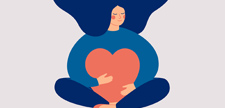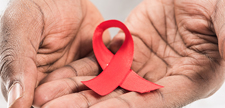
In a world where systemic barriers in health care persist and public trust continues to fray, few voices cut through the noise with the clarity and conviction of Dr. Ala Stanford. At this year’s United Nation World Immunization Shot@Life event at Drexel on April 30, 2025, students and attendees had the profound privilege of hearing from the renowned pediatric surgeon, advocate and national leader in health equity during her keynote address — a talk that was as deeply personal as it was professionally inspiring.

In today’s digital age, social media has become a central aspect of adolescent girls’ lives. Platforms like Instagram, TikTok and Snapchat are among the most popular, offering spaces to connect with friends, share content and explore interests. While social media offers many benefits, including connection, self-expression and entertainment, it can also negatively impact mental health.

Period poverty is the lack of accessibility or affordability of menstrual hygiene tools and educational material, such as sanitary products, washing facilities and waste management.

The health benefits of breastfeeding for both mother and infant have been well-touted for years. Based on these undeniable benefits, the American Academy of Pediatrics recommends exclusive breastfeeding for the first six months of life and continuation of breastfeeding until two years of age or beyond, a recent revision from the previous recommendation of continued breastfeeding for the first year of life or longer.

On April 30, 2025, medical students, health care advocates and future physicians gathered for an energizing advocacy workshop led by Lindsay Cobb, senior associate at the United Nation World Immunization Shot@Life event at Drexel. What followed was more than just a presentation — it was a masterclass in mobilizing passion into policy.

Menstrual health is an essential aspect of women's health that often goes underappreciated. For immigrant and refugee women in particular, managing menstrual health presents unique challenges. Cultural differences, language barriers and limited resources all contribute to these challenges.

In the landscape of women's health, the Pap smear stands as a robust diagnostic tool, particularly vital in the prevention of cervical cancer. This article explores the complexities of Pap smears, highlighting their pivotal role in early detection and underscoring the nuanced influence of public policies in broadening accessibility to these screenings.

During my Women’s Health Education Program (WHEP) elective, I had the privilege of spending a month learning from international board-certified lactation consultants and caring for lactating parents at St. Christopher’s Hospital for Children. As a medical student, I knew only that chest feeding led to better health outcomes. However, what I now know is that U.S. parents who chest feed tend to be of higher socioeconomic statuses, be disproportionately white, and have job flexibility, social support, low stress levels and higher levels of education.

Unfortunately, it’s not just the availability of abortion care that will impact the lives of birthing people in these states. After Dobbs, states with abortion bans in place experienced a decrease in the number of MD applicants for residency programs located in those states, particularly OB/GYN programs.

HIV is criminalized when people who are HIV positive can face criminal charges for engaging in acts not considered criminal if done by a person who is HIV negative.

For far too long disparities in the health care system, whether it was race, socioeconomic class or gender identity, have had a major impact on patients. Today we still see disproportionate measures when it comes to cancer and how it is diagnosed and treated. Breast cancer is the most common non-cutaneous cancer, with hundreds of thousands of new cases each year. Due to the increase in early detection and more effective treatments, the overall mortality rate due to breast cancer has decreased over the years.

Rising temperatures, sinking cities and increased natural disasters show the necessity of addressing climate change today. While these issues have sparked a global uproar and propelled action among world leaders, an insidious component of climate change lurks beneath the surface of melting ice and raging fires. Climate change highlights inequality and demonstrates the vulnerability of certain regions and populations.